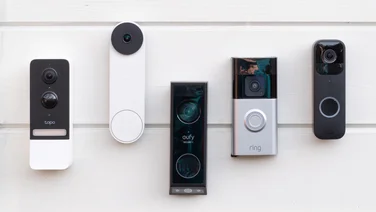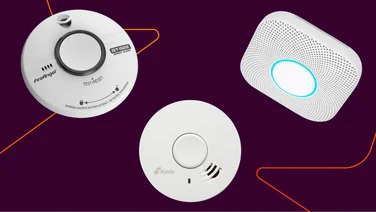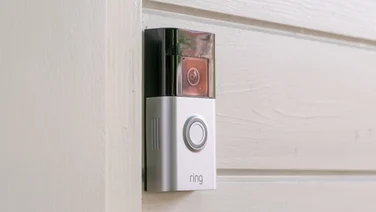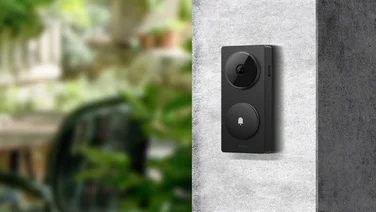To help us provide you with free impartial advice, we may earn a commission if you buy through links on our site. Learn more

- Motorised body
- The scope doesn’t take height into account
- App isn't hugely user-friendly
Motorised security cameras used to be all the rage but recently they’ve been replaced with cheaper fixed-lens models. It’s interesting to see the DCS-8515LH, which is comparatively cheap and gives a full view of your room, thanks to its motorised body.
READ NEXT: Nest Cam IQ review
D-Link DCS-8515LH Pan & Tilt review: Features and performance
Controlled through the clunky but functional MyDLink app, the DCS-8515LH takes a couple of minutes to set up and get connected to your network. Once added to the app, the first thing the DCS-8515LH does is take a panoramic photo of your room, moving the camera through its entire 340° horizontal range.
The photo is used to let you tap the exact spot that you want to move the camera to. It’s a good idea in theory, although the image that appears in the app is exceptionally wide and not very tall, so it can be hard to work out what you’re looking at.
This photo also doesn’t take in height, even with the camera able to move 105° vertically. If you want to look up you have to touch the live-view image and swipe your finger on the screen. You can also move side to side with this feature, but it requires a lot of swiping.
Where you place your camera is important. Placing our DCS-8515LH on a shelf at waist height, we found it couldn’t see the floor with the lens at its lowest position, but it could look all the way up to the ceiling.
Given that more interesting things are likely to happen on the floor, placing the camera lower down (or wall- or ceiling-mounting it) makes more sense. The field of view is also quite narrow, with the camera not showing much at each position, requiring you to use pan and tilt to see more.
In addition to moving your camera manually, you can save up to four preset locations that get their own thumbnail image, and a home position for the camera. These make it easier to move the DCS-8515LH around and jump to the important areas in your house.
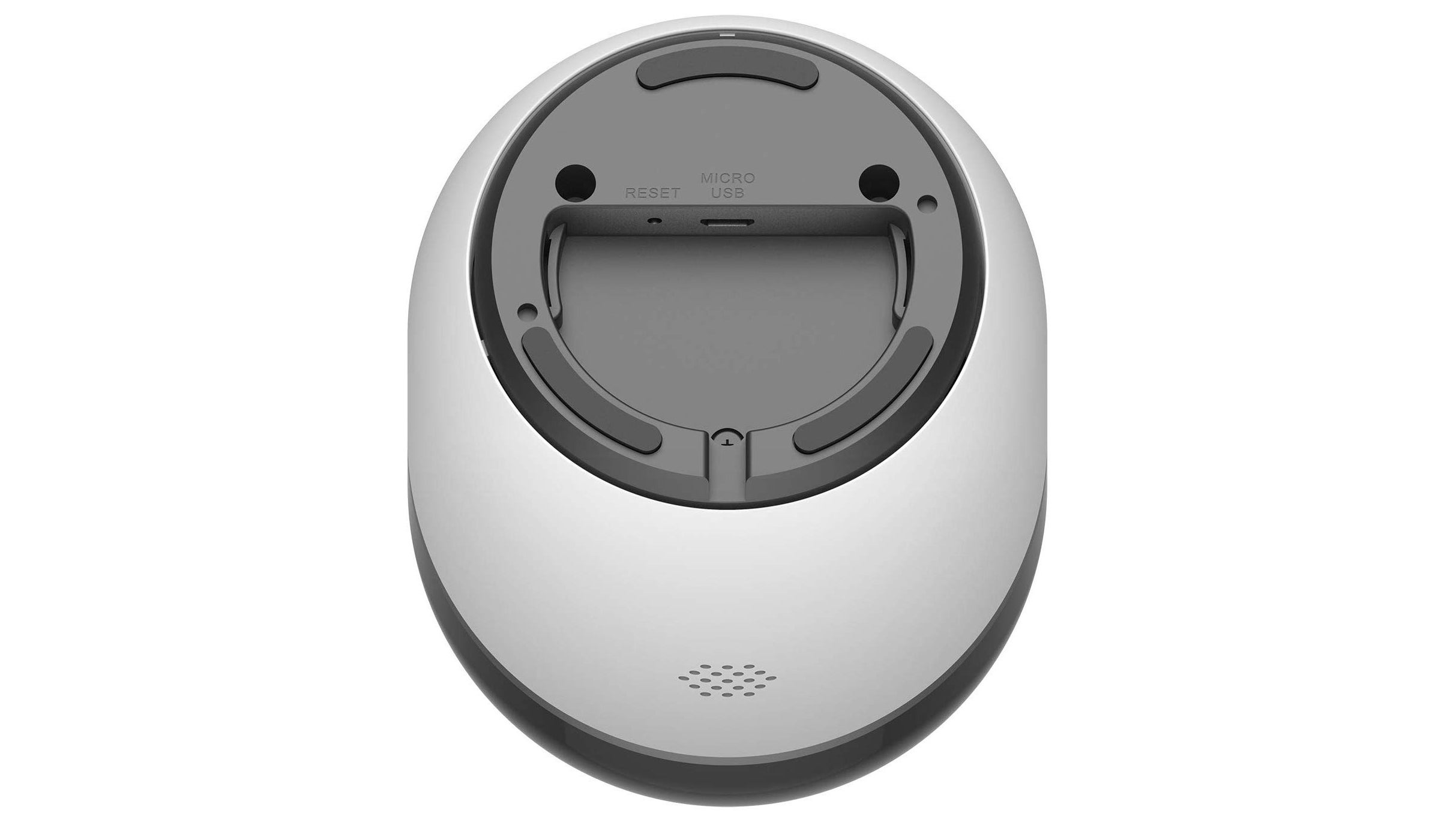
You can set the camera to return to the home position automatically after 60 seconds of no activity, which we recommend doing; without this, you can leave the camera at an odd angle and miss important movement from the camera’s motion detection system.
When the DCS-8515LH detects motion, it pings you an alert. By default, the camera detects motion anywhere in its field of view, but you can use the Active Area setting to choose which parts of the image will pick up motion.
Be careful with this setting. If you move the camera, the Active Area moves too, which may mean that you’re no longer monitoring parts of the image that are important. For example, you may no longer be covering a doorway. Again, it’s a good reason to have the auto home feature turned on.
Alternatively, you can turn on Auto Tracking, where the camera will follow a moving subject around. It’s neat, but the danger here is that any motion detected by the camera starts a recording, so you get more recordings. With fixed cameras, it’s far easier, as you just select the areas you want to monitor.
You can’t schedule when the camera can and can’t record, although you can manually put the camera into privacy mode using the option buried in the camera’s settings. This slides a shutter over the camera so you know it’s not monitoring.
D-Link DCS-8515LH Pan & Tilt review: Price
There’s a microSD card slot on the camera, which you can use for storing locally recorded video clips, and the DCS-8515LH also supports cloud recording. You get one day of video history for free for up to three cameras, and can upgrade if you want more video: seven-day history is £2.29 per month for up to three cameras (or £22 per year), and Premium gives you 14-day history for up to five cameras for £4.49 per month (£44 per year). You can’t set the camera to record to both the SD card and the cloud at the same time, which is a shame.
The app provides a very basic interface for accessing video clips, with just a list available with thumbnails of each clip next to them. There tend to be lots of clips, too, as motion events invariably trigger multiple recordings. Footage can be downloaded to your phone so that you can save evidence.
With a 720p resolution only, the DCS-8515LH’s video lacks the detail of Full HD cameras. The camera struggles somewhat with bright windows, and can compensate by making the main image a little dark. Even so, you can spot facial details and individuals easily enough.
At night, the camera turns on its IR LEDs, which light up a room but soften the image, slightly blurring facial details. This is an issue that affects all IR cameras, however.
There are Skills for Amazon Alexa and Google Assistant so that you can view the video feed on a smart display; however, you can’t control the camera’s pan and tilt functions from these devices.
D-Link DCS-8515LH Pan & Tilt review: Verdict
Having motorised pan and tilt feels like a good thing, but the reality is that it often proves to be a limitation. With a camera that moves, setting up activity zones is hard, as the view can change affecting these zones. In addition, although the DCS-8515LH can provide a full horizontal view of your room, the narrow field of view means that you have to pan and tilt to see more.
As a result, the fixed Nest Cam Indoor will be more practical, and you get a better app and smarter cloud recording – including only getting notifications when a person is spotted – thrown into the mix.

